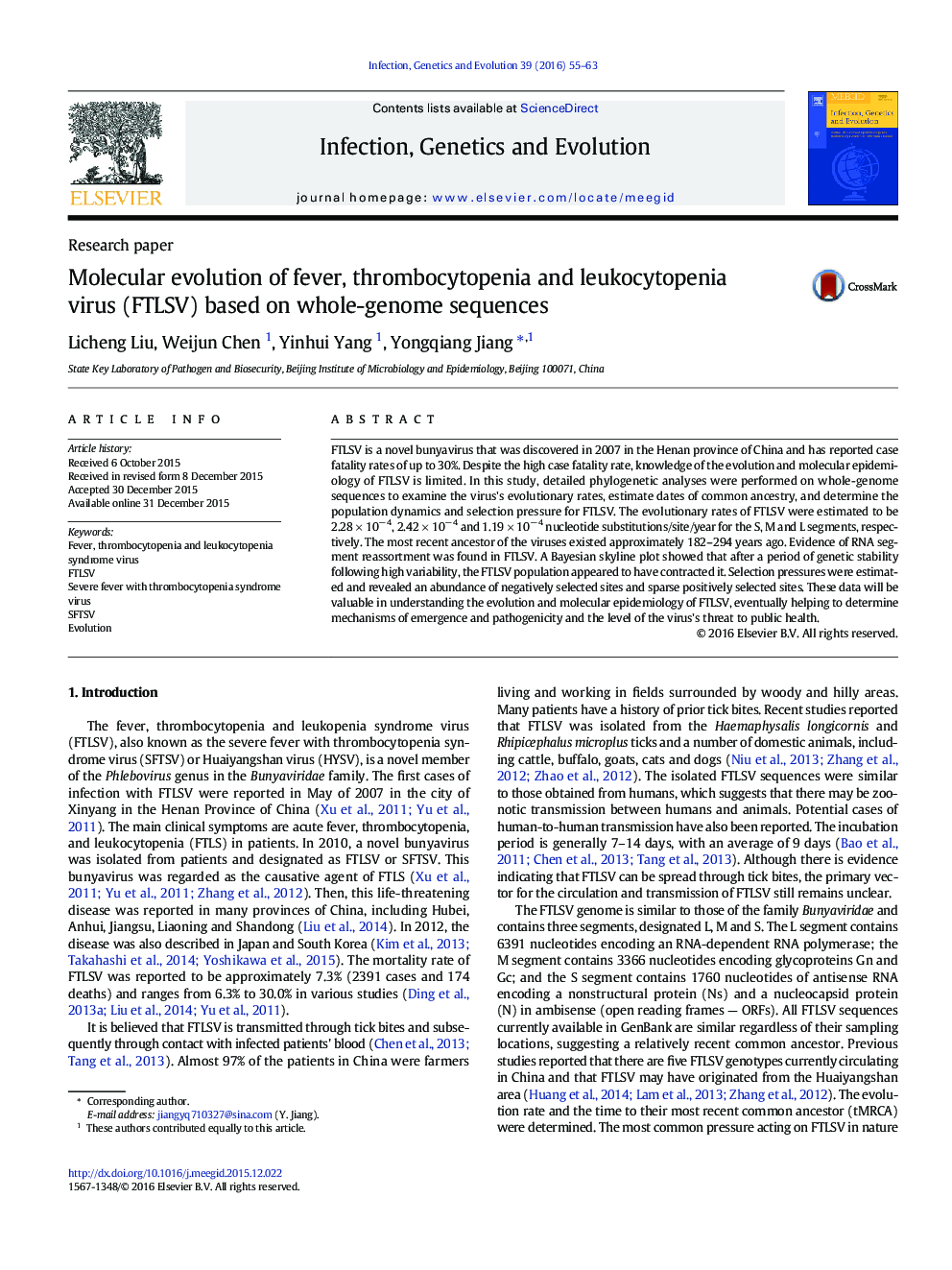| Article ID | Journal | Published Year | Pages | File Type |
|---|---|---|---|---|
| 5908703 | Infection, Genetics and Evolution | 2016 | 9 Pages |
â¢Evidence of reassortment was found in FTLSV.â¢The phylodynamic of FTLSV was determined.â¢The selelction pressures acting on the FTLSV was determined.
FTLSV is a novel bunyavirus that was discovered in 2007 in the Henan province of China and has reported case fatality rates of up to 30%. Despite the high case fatality rate, knowledge of the evolution and molecular epidemiology of FTLSV is limited. In this study, detailed phylogenetic analyses were performed on whole-genome sequences to examine the virus's evolutionary rates, estimate dates of common ancestry, and determine the population dynamics and selection pressure for FTLSV. The evolutionary rates of FTLSV were estimated to be 2.28 Ã 10â 4, 2.42 Ã 10â 4 and 1.19 Ã 10â 4 nucleotide substitutions/site/year for the S, M and L segments, respectively. The most recent ancestor of the viruses existed approximately 182-294 years ago. Evidence of RNA segment reassortment was found in FTLSV. A Bayesian skyline plot showed that after a period of genetic stability following high variability, the FTLSV population appeared to have contracted it. Selection pressures were estimated and revealed an abundance of negatively selected sites and sparse positively selected sites. These data will be valuable in understanding the evolution and molecular epidemiology of FTLSV, eventually helping to determine mechanisms of emergence and pathogenicity and the level of the virus's threat to public health.
